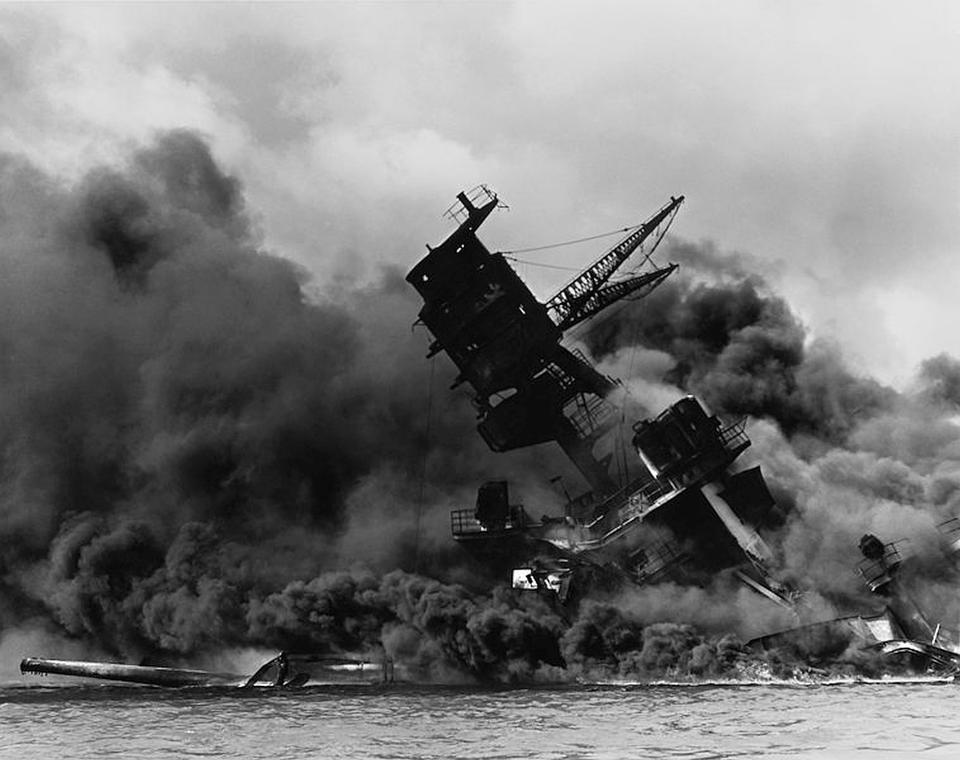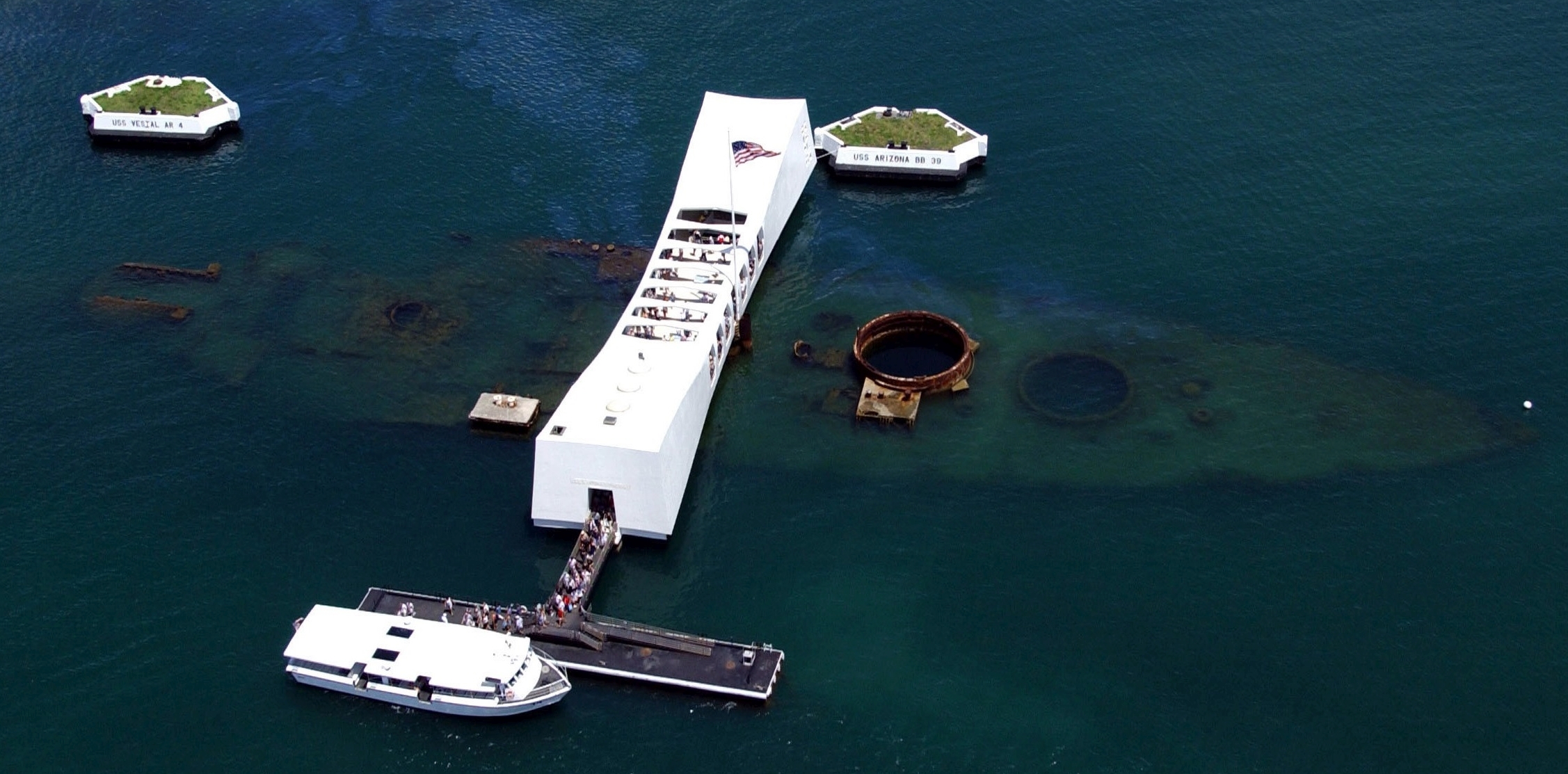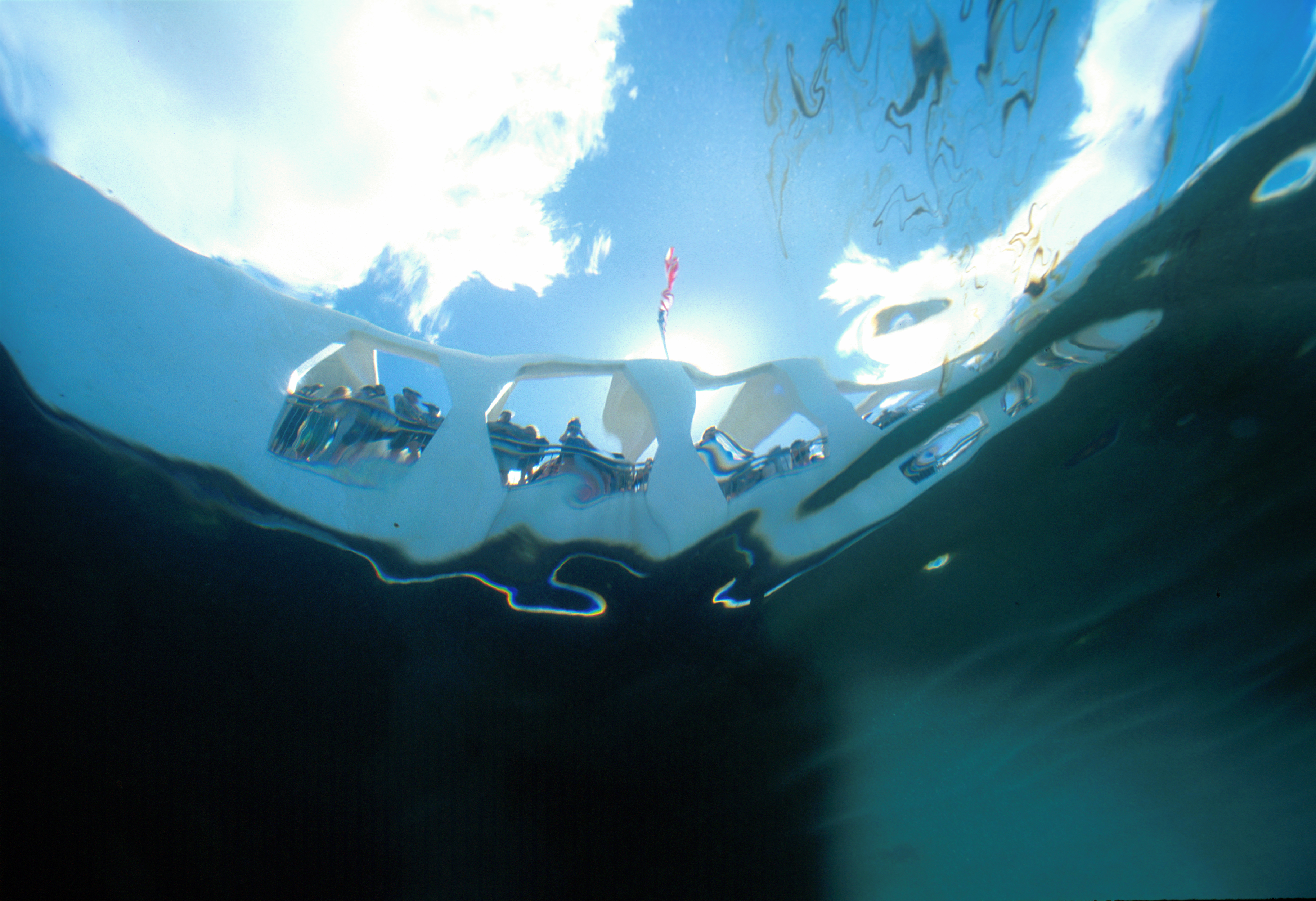Preserving the Spirit of a Mighty Ship—and the Environment Around It
Morale couldn’t have been higher for the crew of the battleship USS Arizona on the morning of Sunday, Dec. 7, 1941. Docked at the Pearl Harbor, Hawaii, Naval Station, the Arizona was scheduled to make a Christmastime trip back home to the West Coast the following weekend. Those plans, and the peace of a nation, were shattered at 7:55 a.m. Hawaii Standard Time when more than 400 planes from the Japanese air force began a sneak attack on the base. Fifteen minutes later, the Arizona’s forward deck was pierced by a bomb that set off 450,000 kilograms (1 million short tons) of explosives stockpiled aboard the ship. It also ignited a large amount of the 4.5 million liters (1.2 million gallons) of heavy fuel oil stored in more than 200 tanks spread across four deck levels of the ship. The resulting fire would burn for the next 2-1/2 days.

Within nine minutes after the fatal blow, the Arizona—three times the size of the Statue of Liberty—sank 10 meters (34 feet) to the bottom of Pearl Harbor, along with the bodies of more than 1,100 Navy sailors and Marines.

Today, the USS Arizona Memorial rests atop the sunken remains of the once-mighty warship. Still inside the deteriorating hull are approximately 1.9 million liters (500,000 gallons) of residual oil (known as Bunker-C fuel) that were not lost on the “Date Which Will Live in Infamy.” More than three-quarters of a century after the Arizona’s demise, fuel continues to seep out of the wreckage daily at widely varying rates that depend on weather, ship traffic in the harbor and other factors less well understood. The ongoing oil release has the memorial’s caretakers, the National Park Service (NPS) and the U.S. Navy, focused on the rate of oil release and the cumulative impacts of small amounts of Bunker-C fuel oil on the tropical waters of Pearl Harbor.

Research led by scientists from the National Institute of Standards and Technology (NIST) has indicated that the structure of Arizona will remain largely intact for several hundred years to come. To scientifically determine the long-term stability of the Arizona’s structure, and predict if or when catastrophic leakage might occur, the NPS Submerged Resources Center in Lakewood, Colorado, reached out in the early 2000s to Tim Foecke, then a metallurgist at NIST and now a research professor at the University of Maryland at College Park. In 2006, Foecke and another researcher at NIST, Li Ma, built a highly detailed computer model of the Arizona’s mid-section based on blueprints of the ship; known data about the vessel’s metal properties, corrosion status and damage condition; and measurements of the external forces acting upon the sunken hull such as pressure and wave action. The model, which breaks the 24-meter (80-foot) long section under study into 200,000 data blocks (known as elements), allows Foecke to “virtually degrade” the Arizona by simulating decades of seawater exposure and structural deterioration.

Based on his calculations, Foecke believes that it will be between 100 to 150 years before a total collapse of the Arizona’s steel hull occurs. He plans to do a comprehensive modeling of the entire structure in the near future to provide even more insight into the vessel’s likely fate.
That information will be extremely valuable as the stewards of the Arizona decide how best to manage the fuel oil left onboard. Because the oil was stored throughout the ship to withstand battle damage, it cannot be completely removed without compromising large sections of the vessel and intruding on what is considered an underwater cemetery. Therefore, NPS and the Navy are considering non-intrusive methods to “seal” the fuel permanently inside.
Did You Know...?
- All eight of the U.S. Pacific Fleet’s battleships were sunk or badly damaged in the Japanese raid on Pearl Harbor. Surprisingly, only two—the USS Arizona and the USS Oklahoma—were not repaired and returned to service. In May 1947, the hull of the Oklahoma sank during a storm 800 kilometers (500 miles) from Hawaii as it was being towed to a San Francisco scrapyard.
- Since 1982, the U.S. Navy has allowed survivors of the 1941 attack on the USS Arizona to be interred inside the vessel upon their deaths. Following a full military funeral at the USS Arizona Memorial, the cremated remains are placed in an urn and deposited by divers beneath one of the submerged gun turrets.
- President Dwight D. Eisenhower signed legislation in 1958 to create the national memorial to the fallen of the USS Arizona. Funds to build it came from both public and private donations, including $50,000—more than 10 percent of the memorial’s final cost—contributed by entertainer Elvis Presley who performed a benefit concert in 1961 near the site.
– Michael E. Newman

